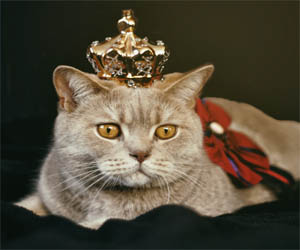


Techniques For Induction

Lucid dreaming, the remarkable state of becoming aware that you are in a dream and, in some cases, taking control of the dream's narrative, is a skill that captivates the imagination of many. While not everyone experiences lucid dreams naturally, various techniques and practices exist to induce these remarkable dream states. In this article, we will explore the fascinating world of lucid dream induction and the methods to unlock the incredible potential of your dream world.
Reality Checks: One of the core techniques for lucid dream induction is incorporating reality checks into your daily routine. Throughout the day, ask yourself questions like, "Am I dreaming?" while examining your surroundings, reading text, or testing the laws of physics. These checks become a habit, and when they carry over into your dreams, they can trigger your awareness.
Dream Journaling: Keeping a dream journal is an essential tool for lucid dream induction. As soon as you wake up, jot down the details of your dreams. This practice helps you become more attuned to your dream world, notice recurring patterns, and identify dream signs that can lead to lucidity.
Mnemonic Induction Of Lucid Dreams (MILD): MILD is a technique developed by Dr. Stephen LaBerge, a pioneering researcher in lucid dreaming. Before falling asleep, repeat a mantra or affirmation, such as "I will be aware that I am dreaming," or "I will have a lucid dream." The key is to believe in your intention and maintain focus as you drift off to sleep.
Wake-Back-To-Bed (WBTB): The WBTB technique involves waking up during the night, staying awake for a brief period, and then going back to sleep with the intention of having a lucid dream. This strategy leverages the increased likelihood of entering a dream directly into a state of awareness after being awake.
Visualization: Visualization techniques involve imagining yourself in a lucid dream scenario before sleep. By vividly imagining the sensations and experiences of a lucid dream, you can prime your subconscious mind to create these experiences during the dream state.
Progressive Muscle Relaxation: Achieving a calm and relaxed state before sleep can facilitate lucid dream induction. Progressive muscle relaxation exercises help you enter the dream world with a clear and focused mind.
Wake-Induced Lucid Dream (WILD): WILD is a technique where you transition directly from wakefulness into a lucid dream. It demands a high level of awareness during the transition between wakefulness and sleep, often during a brief waking period in the middle of the night.
Hypnagogic State Exploration: Hypnagogia is the transitional state between wakefulness and sleep, characterized by visual and auditory hallucinations. Observing and engaging with these hallucinations can lead to lucid dream induction.
Dream Incubation: Dream incubation is a technique where you set a specific question or problem to solve in your dreams before falling asleep. By focusing on the question, you increase the likelihood of receiving insights during your dreams.
Lucid Dream Aids: There are various tools and technologies designed to aid lucid dream induction, such as lucid dream masks that use cues to signal when you are in a REM (Rapid Eye Movement) stage of sleep, increasing your chances of becoming lucid.
Lucid dream induction is a skill that requires practice, dedication, and patience. While not everyone may experience immediate success, the rewards are well worth the effort. Lucid dreaming offers a gateway to a world where the boundaries of reality are limited only by your imagination. By mastering the techniques of lucid dream induction, you can embark on a journey of self-discovery, creativity, and boundless adventure within the realm of your own mind.


Top Tips For Success
 2. Consistency Is Key: Consistency in training is vital. Use the same cues, commands, and techniques throughout your training sessions. Dogs respond well to predictability and repetition, so keeping things consistent helps them understand what is expected of them.
2. Consistency Is Key: Consistency in training is vital. Use the same cues, commands, and techniques throughout your training sessions. Dogs respond well to predictability and repetition, so keeping things consistent helps them understand what is expected of them.
3. Positive Reinforcement: Use positive reinforcement methods like treats, praise, and play to motivate and reward your dog during training. Dogs are more likely to learn and retain commands when they associate them with positive experiences.
4. Know The Rules: Familiarize yourself with the rules and regulations of the competition you're entering. Each event has specific guidelines and expectations, and understanding them is essential to ensure your dog's success.
5. Find A Qualified Trainer: Consider seeking the assistance of a professional dog trainer who specializes in the specific competition you're interested in. They can provide expert guidance and help you and your dog refine your skills.
6. Gradual Exposure: Gradually expose your dog to the competition environment. Start by practicing in familiar settings, then gradually introduce new elements, such as different locations, distractions, and other dogs. This helps your dog adapt to the competition environment.
Unraveling The Conspiracy
 The Government Cover-Up Theory
The Government Cover-Up Theory
The theory of government involvement in crop circles centers around the idea that some circles are not the work of hoaxes or natural forces but rather secretive experiments conducted by government agencies. Proponents of this theory claim that governments are using crop circles to test advanced technologies, including anti-gravity systems and energy sources.
Evidence And Anecdotes
Conspiracy theorists point to several pieces of evidence to support their claims. They cite instances where military personnel were allegedly seen near crop circle formations shortly after they appeared. Some claim that unusual equipment was used to create the circles, equipment that goes beyond what ordinary hoaxers would possess.
Government Response
The official stance of governments around the world is that crop circles are primarily the result of human-made hoaxes. They argue that there is no substantial evidence to support the conspiracy theory. However, this official position fuels suspicions for some who believe the government is actively covering up its involvement in creating or studying crop circles.
A Skeptical Perspective
 Skeptics also emphasize the lack of empirical evidence for Nostradamus' supposed prophetic abilities. They argue that belief in his predictions is largely rooted in confirmation bias, where believers selectively focus on the handful of quatrains that appear to match historical events while ignoring the majority that do not. The scientific method and the principles of critical thinking, which demand empirical evidence and verifiable predictions, are often conspicuously absent from the believers' claims.
Skeptics also emphasize the lack of empirical evidence for Nostradamus' supposed prophetic abilities. They argue that belief in his predictions is largely rooted in confirmation bias, where believers selectively focus on the handful of quatrains that appear to match historical events while ignoring the majority that do not. The scientific method and the principles of critical thinking, which demand empirical evidence and verifiable predictions, are often conspicuously absent from the believers' claims.
Moreover, critics highlight the historical context in which Nostradamus lived. His era was marked by political, religious, and social turmoil, and his quatrains can be viewed as a reflection of the uncertainties and anxieties of his time. Skeptics argue that his writings may have been more about capturing the spirit of the era than providing specific glimpses of the future. They maintain that the events he purportedly predicted can often be seen as general reflections of the historical climate of his time.
Another common target for debunking is the selective use of Nostradamus' quatrains by believers. Skeptics assert that proponents of Nostradamus often cherry-pick the quatrains that seem to match historical events while ignoring those that do not. This selective interpretation of his work contributes to the perception of his supposed prophetic abilities.
A Guide To Feline Well-Being
 2. Regular Veterinary Care
2. Regular Veterinary Care
Routine veterinary care is crucial for maintaining your cat's happiness. Regular check-ups and vaccinations are essential for preventing illness and ensuring your cat's well-being. Your veterinarian can also address any health issues and provide guidance on preventive care.
3. Emotional And Social Needs
Cats may be independent, but they are not solitary creatures. They require social interaction and affection. Spend quality time with your cat, petting and talking to them. Building a strong bond with your cat is a surefire way to enhance their happiness.
4. Mental Stimulation
Cats are curious creatures that need mental stimulation to be content. Provide them with toys, puzzles, and interactive playtime. Toys like feather wands, laser pointers, and treat-dispensing puzzles can keep your cat engaged and mentally active.
5. Grooming And Hygiene
Regular grooming is essential for your cat's well-being and happiness. Brush your cat to prevent matting and reduce shedding. Cats may also require occasional baths.
A Guide To A Safe And Happy Environment
 Safety And Comfort: Crates offer a secure environment for your puppy, protecting them from household hazards, such as chewing on electrical cords or ingesting toxic substances. The crate can also serve as a cozy and familiar den where your pup feels safe and comfortable.
Safety And Comfort: Crates offer a secure environment for your puppy, protecting them from household hazards, such as chewing on electrical cords or ingesting toxic substances. The crate can also serve as a cozy and familiar den where your pup feels safe and comfortable.
Housebreaking: Crates are valuable tools for housebreaking. Puppies instinctively avoid soiling their living area. By confining your pup to the crate when you cannot supervise them, you encourage them to "hold it" until they can be taken outside for bathroom breaks.
Preventing Destructive Behavior: Puppies can be quite mischievous, and unsupervised exploration can lead to destruction. Crate training helps prevent unwanted chewing or digging, thus protecting your belongings.
Travel And Vet Visits: Crate-trained puppies are more comfortable during car rides and vet visits. They are familiar with the crate and see it as a safe and comforting place, reducing stress during these experiences.
Steps For Effective Crate Training
Choose The Right Crate: Select an appropriately sized crate for your puppy. It should be large enough for them to stand, turn around, and lie down comfortably. However, it shouldn't be so big that they can use one end as a bathroom.
Introduce Gradually: Allow your puppy to explore the crate at their own pace. Start by leaving the crate door open, placing some treats or toys inside to encourage them to enter. Make the crate a positive and inviting space.
Feeding In The Crate: To create positive associations, feed your puppy inside the crate. Place their food bowl near the back, gradually moving it deeper into the crate over time.
Short Intervals: Begin by closing the crate door for short periods while you're present. Stay with your puppy and reassure them. Gradually increase the duration as your puppy becomes more comfortable.